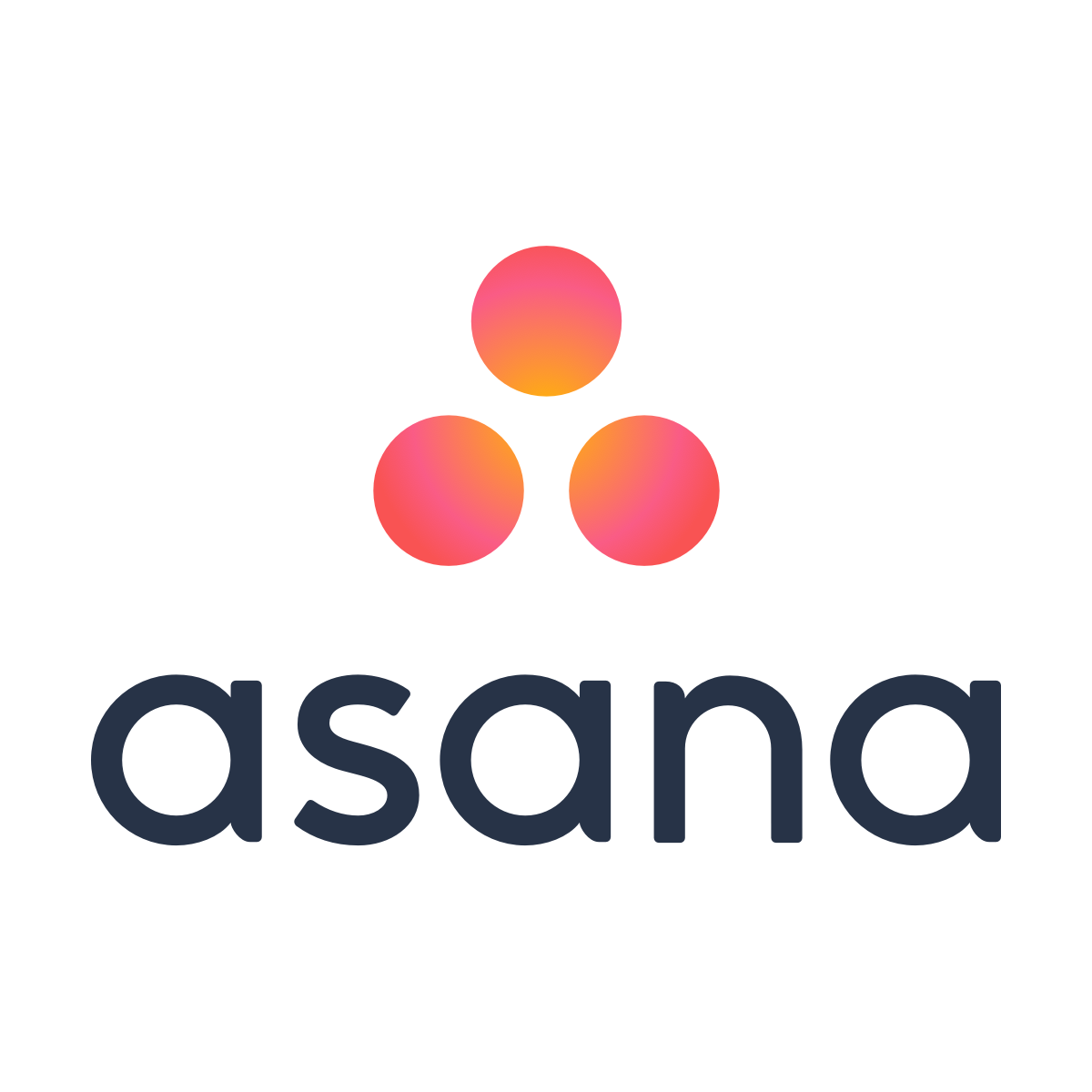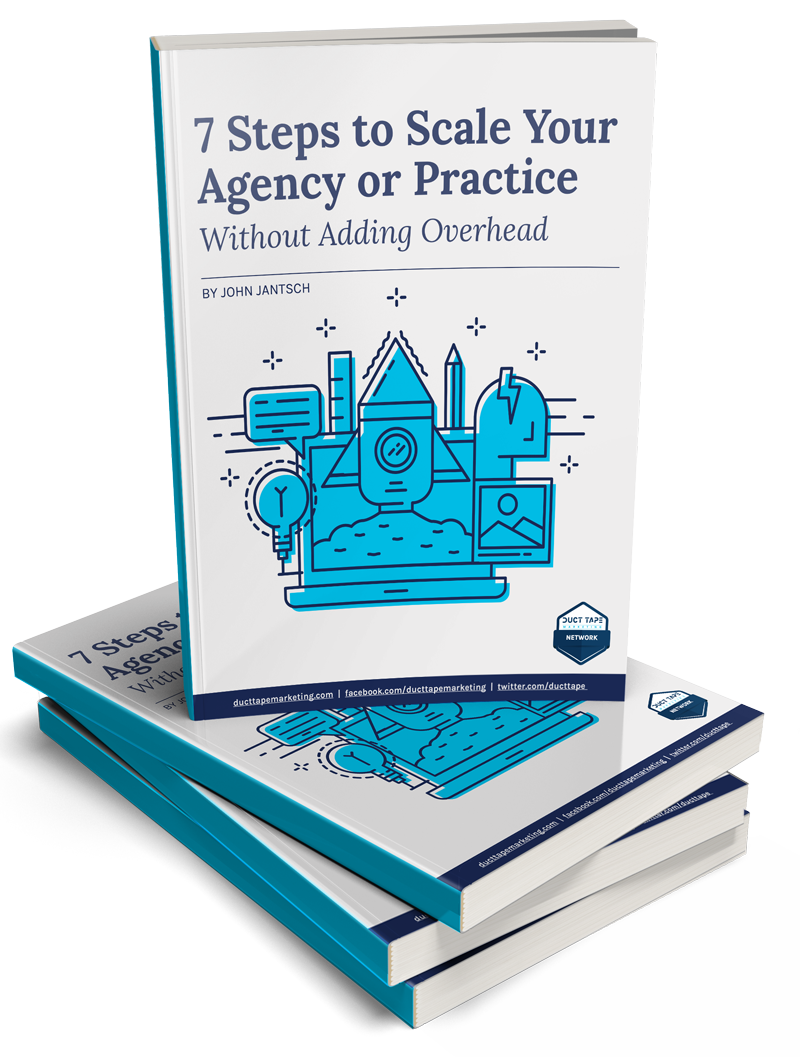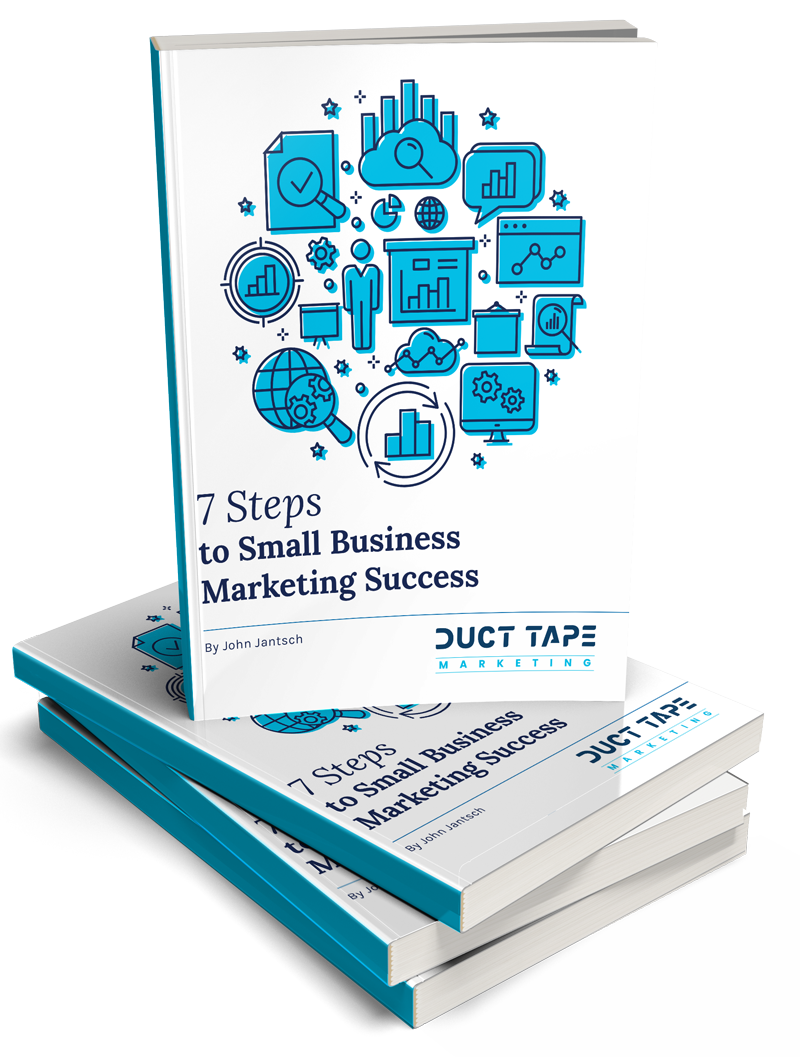Transcript
This transcript is sponsored by our transcript partner – Rev – Get $10 off your first order
 John Jantsch: This episode of the Duct Tape Marketing podcast is brought to you by Asana, a work management software tool that we use to run pretty much everything in our business. All of our meetings, all of our product launches, all of our tasks. I’m going to show you how you can try it for free a little later.
John Jantsch: This episode of the Duct Tape Marketing podcast is brought to you by Asana, a work management software tool that we use to run pretty much everything in our business. All of our meetings, all of our product launches, all of our tasks. I’m going to show you how you can try it for free a little later.
John Jantsch: Hello and welcome to another episode of the Duct Tape Marketing podcast. This is John Jantsch and my guest today is Melissa Agnes. She is a leading authority on crisis preparedness, reputation management, and brand protection. She’s also the author of a book we’re going to talk about today, Crisis Ready: Building an Invisible Brand in an Uncertain World. Melissa, thanks for joining me.
Melissa Agnes: Thanks for having me, John.
John Jantsch: What does a brand crisis look like?
Melissa Agnes: Brand crisis is any type of negative event that threatens longterm material impact on one to all of the following five things. Here we’re looking at people, so stakeholders and the relationships you share with those people for your business. Business operations. The environment. The organization’s reputation and/or the organization’s bottom line. Any type of negative event that threatens longterm material impact on any to all of those five things.
John Jantsch: Yeah. We can probably all conjure up an example of where a company really got in trouble. A lot of times it probably has to do with negative press, or certainly stock price falling. Can you give me a couple examples that would help us kind of frame a brand crisis for an organization?
Melissa Agnes: A brand crisis, yeah. One thing that’s worth noting is there’s a difference between an issue and a crisis and businesses suffer through issues … I mean, that’s a part of business is suffering through issues. The difference though is that they’re both negative events. One of the doesn’t threaten that longterm material impact, versus another one that does. An example that I love to give is, because it’s just so random and so out of anything that anybody could’ve ever imagined, is do you remember what happened to Crock-Pot last year and [inaudible 00:02:25]?
John Jantsch: I must admit, I do not.
Melissa Agnes: No, that’s okay. Last year around … Actually, around this time last year, this is us. One of the leading primetime television shows that airs today. The show has over 15 million viewers every single week that tune in as a family primarily to watch this show. Over the course of two years or so they had been leading up to revealing the story of how one of the most beloved characters on the show, so Jack Pearson, the patriarch of the family, how he dies. The story of how he dies. Finally, on this … Whatever day it airs, they revealed that story. The story was that Jack is cleaning the kitchen one evening and it’s this beautiful scene, very creatively crafted and you see moments of the family, and flashbacks, and all of these wonderful moments, and at the end of it, he turns on a … Not a Crock-Pot. He turns on a slow cooker, a very ancient slow cooker that came with a story, along with a segment, and he goes to bed.
Melissa Agnes: That slow cooker short circuits and sets fire to the house and Jack dies of smoke inhalation. The completely random part to this is the next day … Again, this is a slow cooker, a generic slow cooker. It was not a Crock-Pot machine. Yet, the next day Crock-Pot woke up to thousands upon thousands of longstanding generational customers taking to social media and saying, “Oh my goodness, we’re going to throw out our Crock-Pot machine and we’re never buying from this brand again.” It wasn’t just on social. It made it to … Morning talk shows we’re talking about it. It made … It was across the continent news. Stephen Colbert talked about it in his monologue that evening. The reason being was that the show was so beautifully crafted that everybody who watched it sat there and felt emotionally compelled by the storyline. Then, they went to their brains and they went, “Oh my goodness, we have a Crock-Pot machine. I don’t want my family to die.”
Melissa Agnes: It started this very real, very social, right? Relatable so therefore shareable story, narrative online that people started banning together and fearful together and their solution was Crock-Pot is bad, we will never use the brand again. If we look at this, any organization … When I said there’s difference between issue and crisis, organizations could easily have looked at this scenario and been like, “Yo, this is so irrational. This has never happened in the history … This is a fictitious television show. It just makes no sense.” Yet, Crock-Pot was smart enough to say, “Okay, but what is real here? What’s real here is that people are profoundly fearful for the lives and safety of their families, the most important thing to them. If we don’t do something about it, we risk losing them. And at the very least, we risk having this negative emotional sentiment attached to our brand, whether it’s conscious or subconscious to people moving forward.”
Melissa Agnes: That is a potential material impact. What I help organizations do and what every single business, whether you’re a solopreneur, or a brand that has tens of thousands of employees around the world, is every single business is at risk or vulnerable to a series of high-risk, high-impact, or most likely high-impact issues and most likely high-impact crises. Once you become crisis ready, you go through the motions of putting your team in a position where you don’t just have a plan that’s sitting on a shelf that’s says, “In a crisis we’re going to grab this plan.” But you actually have a team that is able to do what Crock-Pot did and assess, think like the material … Or the emotional relatability of the situation to assess its material impact and ultimately you want to be in a position where whether it’s an issue or a crisis, your team instinctively is able and empowered to respond in a way that actually fosters increased trust and credibility in the brand.
John Jantsch: I think it would be safe to say that there’s a lot more exposure with … I mean, people leapt to Crock-Pot because that was the well known brand of that type of appliance. What about an organization that they don’t really have a brand that’s going to find itself in that kind of situation? I mean, how do they strategically look at this idea of being prepared?
Melissa Agnes: You look at what are your risks. What is it that matters to your business and what are the negative events that you are prone to? That can be something like a supply chain disaster, catastrophe. It could be a natural disaster that wipes your operations out for a significant period of time that’s going to have a massive impact on your bottom line and potentially your reputation, your relationship with your stakeholders, because they may need to go elsewhere, right? You might lose them. You might lose those clients. It can be anything from having one of your key … People are a risk, because that’s human nature.
Melissa Agnes: A prominent member of your team being arrested on some kind of allegation, right? That’s a risk. At what point in that scenario would … Where’s the risk there and at what point would you support that person and stand behind that person? At what point would you need to disassociate your brand from that person and why and what’s the best way to do that? Risk is all around us and it’s … Becoming crisis ready is just being very in tuned with what that means to your business and what’s expected of you by those who matter most to your business when something does go wrong and being in a position to meet, if not exceed those expectations.
John Jantsch: I know that in the title, subtitle, you have “Uncertain World,” and I agree. We are in an uncertain world. But this sort of feels like a downer to be sitting around thinking about all the things that could go wrong.
Melissa Agnes: Well, yeah. Sure. I didn’t say that it was going to be jolly, but it’s very necessary. Here’s the thing, when you become … I really believe … Throughout my book I have these crisis ready rules and I strongly, strongly believe … The work that I do with my clients is very comprehensive. It’s not just about having this very high level plan that doesn’t serve us that’s on the shelf, which is unfortunately status quo today. But we dive deep into understanding the relationships with key stakeholders, the business operations. We find gaps in vulnerability so we’re able to strengthen that impact of day-to-day of business and the regular relationship that you … Every business is built on relationships and crisis management is about those relationships. It’s about sustaining and maintaining those relationships even in tough times. The way that my brain works is I see risk everywhere. I see mitigation strategies for those risks, just kind of intrinsically.
Melissa Agnes: Then I see opportunity through the mitigation. Yes, it’s not the most joyous of activities to sit down and talk about all of the ways that your business can sink. It is necessary. It’s smart. It’s smart business to do that. It’s strategic. But, if you look at … The world crisis of Ebola, for example, was managed because the CDC was smart enough to identify WhatsApp as a very significant communication tool to communicate with West Africans on how to protect themselves in a way that they were not receiving. Everybody else was trying to do the same thing, but nobody was strategic enough to look at the opportunity of technology. There’s so much opportunity that comes from when you get past the downer of the negative. Then you are able to find some really fastening and opportunistic strategic ways to augment your business every day by being crisis ready. Because after you mitigate the risks is the opportunity for the mitigation.
John Jantsch: Hey, as I said in the intro, this is brought to you by Asana. It’s a work management software tool that we’ve been using for a long time, our entire team. It just allows us to be so much more productive. To unify our communication, to keep track of task, to assign and delegate, pretty much run everything from meetings all the way up through our client work. You can get it and try it free for 30 days because you are a listener. Get started at asana.com/ducttape. That’s Asana. A-S-A-N-A.com/ducttape.
John Jantsch: I think it probably comes with a point of view and maybe even we’d go as far as saying a culture that is … I don’t even know how to say this. Prepared, I suppose. One of the things I see … Where I see people really get in trouble is when they ignore, or deny, or no comment a crisis and it seems like they almost make it worse. I think that that’s … That’s sort of a … Isn’t that sort of a culture of … You’ve also seen the flip side of that, organizations that said, “We screwed up. Here’s how we screwed up. Here’s how we’re fixing it.” It seems like they always come out a little better in the end.
Melissa Agnes: 100%. Your spot on with culture, because … I always say that … I don’t use that language, crisis management plan, because a plan is typically very siloed, it’s very linear, it’s very stagnant. It sits on a shelf. It doesn’t serve to the caliber that it needs to in my opinion. Whereas, what I do with my clients and what the book does is it helps you design a crisis ready program that you then embed into the culture of your organization. That’s the only way to be able to understand, to use your example, that why no comment doesn’t work.
Melissa Agnes: No comment doesn’t work because people expect information today and the more you communicate, the more proactive you communicate, the more effectively you communicate, and the sooner you communicate effectively, the less what I call crisis response penalty you’re going to suffer because there is an expectation and a demand of that communication today, and as well as taking the right actions. No comment does exactly the opposite. It makes us not trust you, right? Why no comment? There’s no such thing or no excuse for no comment today. There never actually was, but with social media we now … Every consumer has a voice and we can actually stand up and say, “Hey, we don’t accept your no comment.”
John Jantsch: I use the word culture, but to some degree it probably has as much to do with at least being very clear on what your brand stands for. I think that that in many cases probably is sort of the filter for, “Here’s how to handle any situation.” Isn’t it?
Melissa Agnes: What your brand stands for, absolutely, especially when you’re … If you get caught in a controversy of some kind. Controversy segregates instinctively, just in … That’s what it does. Understanding what your brand stands for and the values that connect you to your key stakeholders is essential and making decisions, visible decisions in alignment with those values as a beacon, a guiding beacon is really important. But what it really comes down to is understanding … And I’m going to simplify it here and it’s this simple. It just requires work. Is understanding who your stakeholders are, so literally … Yeah. One of a frustrating points that I have is that oftentimes leadership doesn’t have, most often, doesn’t have a list of … A consolidated list of who their stakeholders are, who the brand’s stakeholders are for those groups.
Melissa Agnes: Anything from, depending on the organization, but it could be anything from your board, to your employees, to volunteers, to investors, to your customers and clients, to your vendors, to the authorities and government relations, regulators, depending on the industry, right? Depending on [inaudible 00:14:57]. But having a consolidated list of exactly who those stakeholder groups are and going through your high rank scenarios, so your most likely most high impact issues and crises and saying, “In crisis scenario number one, which we’ve identified as being the most likely type of negative event to strike us that would have material longterm impact. What will our … Or what would our employees expect of us? Are we in a position to meet those expectations? What are the key concerns and questions that we can anticipate now and put ourselves in a position to be able to answer seamlessly in the heat of the moment?”
Melissa Agnes: Same questions apply to the same scenario with your customers, with your vendors, with your investors, with your board of directors, with etc., etc. If you do that exercise, it’s a simple exercise that requires thought, and deliberation, and time, but it’s still simple and yet it’s so profoundly powerful in negative times, but as well as in those positive times because it brings you closer to those people by understanding them. You can find then opportunities within your day-to-day business to connect with them and to strengthen those relationships regularly.
John Jantsch: You’re literally saying … Let’s say I’m a nonprofit agency and it comes to light that a key employee has been embezzling donor funds. That sounds like a crisis, doesn’t it? Are you literally saying we would sit around once or quarter or something and actually role play that?
Melissa Agnes: Absolutely. Once a quarter isn’t a lot. You don’t need to do it once a quarter to role play, but part of embedding a crisis ready culture is going through simulations. That’s great for two things. One, it’s great for honing your program, testing your program, finding gaps and weaknesses and areas of vulnerability and strengthening them in ways that you cannot identify those gaps and vulnerabilities unless you test it and you can either test it in an actual event, or before. Then it also … Being crisis ready means that your entire team instinctively knows how to identify risk, how to assess its material impact on your organization quickly, and then how to respond in a way that actually fosters increased trust and credibility in a brand. Well, that’s a skillset and that’s a skillset that you can train and learn as a team and simulations give you that power and that experience.
John Jantsch: I’m wondering if organizations, and this might go back to the culture, but I wonder if … I mean, I could see organizations treating this like they might treat a fire drill. “Oh, we got to do that again. That’s so silly. I’m not going to … ” Again, I know that’s part culture of, “Here we go again with another thing,” kind of thing. But do you ever see the risk of that, that something so remote is being practiced and it seems like a waste of time?
Melissa Agnes: Not with me, because I would never waste my client’s time. The organizations that do this type of … It’s scalable, right? If your brand has 10 that are … Or a company of 10, you’re not necessarily going to go to full fledged crisis simulation, but you should be having this conversation. There’s no reason why you shouldn’t know what are the most likely high impact types of negative events that can put you out of business ultimately, right? Affect your livelihood and the brand that you’ve build up over years and that you love. There’s no excuse to not know what those are. Then, straight through to [inaudible 00:18:33] brands that would go through these types of simulations.
Melissa Agnes: In order to make it a not waste of time, is to define clear objectives, right? Before any type of exercise or before … Whether that’s an exercise of a discussion around a table with leadership, or your entire team if you’re a brand of 10, or straight through to a full fledged simulation, you’re not going to test everything. You should never want to test everything. But you’re looking at, “Hey, how … Let’s find some gaps in our communication process. How can we strengthen that?” Then that translates into everyday strengthening business … A way to strengthen everyday parts of your business as well. Yeah, so you make it so that it’s not a waste of time. It’s a strategic spend of time.
John Jantsch: This may be more of an issue than a crisis, but today, because of social media, individuals and competitors can really insert themselves as part of our brand. How does an organization prepare for that kind of trolling and just kind of bizarre stuff that goes on now that unfortunately is public? I mean, where there’s YouTube channels dedicated to hating on people and companies. I mean, how do you deal with that?
Melissa Agnes: When I talk about those relationships and how being crisis ready helps you understand who your stakeholders are and you can use that as an opportunity, a proactive opportunity every day, the bigger trust that you have built up prior to something negative happening, whether that’s somebody going on YouTube and doing a bad product review that is entertaining and garners thousands upon thousands of views. That might quite frankly could be something that goes viral in the context of what you’re used to, right? You can get a hundred views and that could be viral to you in context of your everyday baseline and have impact, or threaten to have impact, or feel as though it could threaten to have impact. If you have a brand that those who matter most to your business know who you are, know what you stand for, know that anytime there’s any type of issue you are on it. Your team cares.
Melissa Agnes: They’re always putting people above profits and bottom line, which is one of my crisis ready tools. If you prove that day in and day out, you gain the benefit of the doubt at the onset of something negative happening. When that product review comes out and it’s entertaining and it starts garnering attention, those who matter to your business, not … The whole world does not matter to your business. Those who matter to your business, the ones that you’ve identified in that stakeholder mapping exercise, the ones that you work every day to strengthen relationships with, will look at that and turn it off and say, “That’s a joke. That’s not true.” And furthermore, they might even … If you do your job right, they could become your brand ambassadors and advocates and come back and fight for you in that, in shutting that down so that your team doesn’t even have to.
John Jantsch: Now we’re starting to really get to the opportunity idea of this point of view, too, is that by actually taking that point of view you’re not just buying insurance, you’re not just mitigating risk. You’re actually looking at it as a way to strengthen the brand, aren’t you?
Melissa Agnes: Absolutely. That is why I’m so passionate about what I do, because of … That is the outcome ultimately of becoming crisis ready.
John Jantsch: Melissa, where can people find out more about crisis ready and the work that you do?
Melissa Agnes: MelissaAgnes.com is a great place. I have links to my book there. I also have an online course that walks you through step-by-step the … I have a … The crisis ready model, which is the framework to becoming crisis ready that walks you through step-by-step to help you actually design and embed that culture, that program into your business.
John Jantsch: Awesome. Well, thanks for stopping by the Duct Tape Marketing podcast and hopefully we’ll run into you someday out there on the road.
Melissa Agnes: Yes, good. Thanks for having me, John.



